Digital-Based Healthy Bra Top Design That Promotes the Physical Activity of New Senior Women by Applying an Optimal Pressure
Abstract
1. Introduction
- To extract bra top design elements that reflect the needs of new senior consumers.
- To use the 3D modeling technology to develop a virtual human body model that reflects the characteristics of new senior women’s body form.
- To develop a three-dimensional pattern while considering an optimal clothing pressure that will not severely affect new senior women’s physiological function and to simultaneously provide a consumer-desirable body shaping effect.
- To verify whether the use of 3D virtual fitting technology is suitable as a tool for measuring the fit of the bra top of a new senior woman.
2. Materials and Methods
2.1. Extracting Design Elements That Reflect Consumer Needs
2.2. Development of a Virtual Human Body Model Reflecting the Morphological Characteristics of the Body
2.2.1. Developing a Standard Body Form for New Senior Women
The Target Group
Average Wire-Frame Generation
Standard Human Modeling
Form Conformity Verification
2.2.2. 3D Molded Bra Cup Development
2.3. Developing Three-Dimensional Patterns That Consider Optimal Clothing Pressure
2.4. Evaluating Clothing Fit
2.4.1. Experts’ Appearance Evaluation
2.4.2. Objective Evaluation Based on the Virtual Fitting Technology
3. Results
3.1. A Bra Top Design That Reflects Consumer Needs
3.2. A Virtual Human Model That Reflects the Morphological Characteristics of the Body
3.2.1. Developing a Standard Body Form for New Senior Women
3.2.2. 3D Molded Bra Cup Development
3.3. Developing a Three-Dimensional Pattern That Considers Optimum Clothing Pressure
3.4. Evaluating the Clothing Fit
3.4.1. Expert Appearance Evaluation
3.4.2. Objective Evaluation Based on Virtual Fitting Technology
4. Discussion
5. Conclusions
Author Contributions
Funding
Institutional Review Board Statement
Informed Consent Statement
Conflicts of Interest
References
- World Health Organization. The World Health Report: 1998: Life in the 21st Century: A Vision for all: Report of the Director-General; World Health Organization: Geneva, Switzerland, 1998. [Google Scholar]
- Bae, J. Silver Business in the Age of Aging; LG Economic Research Institute: Seoul, Korea, 2000. [Google Scholar]
- Chae, J.M. Clothing Purchase Behavior of Active Senior-Differences According to Gender and Shopping Orientation Types. Fash. Text. Res. J. 2020, 22, 25–37. [Google Scholar] [CrossRef]
- Kim, H.S. A research on emotional design for mobile phone in next generation: Focused on smart phones for active senior. J. Korean Soc. Des. Cult. 2012, 18, 103–116. [Google Scholar]
- Cho, A.L.; Son, Y.J.; Lee, I.S. A design development for the outdoor wear for new senior generation. J. Korea Des. Knowl. 2014, 31, 65–75. [Google Scholar]
- Lee, S.; Chun, J. Women’s perceptions of physical deformation from aging and demand on postural correction wear. Res. J. Costume Cult. 2012, 20, 725–735. [Google Scholar] [CrossRef]
- Kim, G. A Study on the Elderly Women’s Clothing Purchasing Behavior according to Their Lifestyle. Master’s Thesis, Sookmyung Women’s University, Seoul, Korea, 2011. [Google Scholar]
- Sherman, E.; Schiffman, L.G.; Mathur, A. The influence of gender on the new-age elderly’s consumption orientation. Psychol. Mark. 2001, 18, 1073–1089. [Google Scholar] [CrossRef]
- Troen, B.R. The biology of aging. Mt. Sinai J. Med. 2003, 70, 3–22. [Google Scholar] [PubMed]
- Kim, S.; Choi, H. Body Shapes of Aged Women Applying 3D Body Scan Data. Res. J. Costume Cult. 2009, 17, 1099–1111. [Google Scholar]
- Baek, Y.; Choi, J.; Lee, K. Selection of the measurement points for the garment pressure of the brassier and the waist-nipper. Korean J. Community Living Sci. 2007, 18, 445–453. [Google Scholar]
- Baek, Y.; Choi, J. Determination of the garment pressure level using the elastic bands by human body parts. J. Korean Soc. Cloth. Text. 2008, 32, 1651–1658. [Google Scholar] [CrossRef]
- Gong, M. Design for Innerwear; Gyeongchunsa: Seoul, Korea, 2006; p. 9. [Google Scholar]
- Zhang, S.; Yick, K.; Yip, J.; Yu, W.; Tang, K.M. An understanding of bra design features to improve bra fit and design for older Chinese women. Text. Res. J. 2021, 91, 406–420. [Google Scholar] [CrossRef]
- Cha, J. Study on the Silver Generation’s Physical Characteristics-Considered Underwear Design. Master’s Thesis, Ewha Womens University, Seoul, Korea, 2008. [Google Scholar]
- Heo, S.M. Research of Brassiere Design Differentiation by Analyzing Senior Women Physical Body Change; Ewha Womans University: Seoul, Korea, 2017. [Google Scholar]
- Jeong, Y. Fundamental Relationship between the Reduction rates of Stretch Fabrics and Clothing Pressure. Korean J. Hum. Ecol. 2008, 17, 963–973. [Google Scholar] [CrossRef]
- Na, Y.; Lee, D. Clothing pressure sensation and discomfort experience of skinny jean. Korean J. Hum. Ecol. 2010, 19, 655–665. [Google Scholar] [CrossRef]
- Park, J.H.; Chun, J. Comparison of evaluation methods for measuring pressure of compressionwear. Res. J. Costume Cult. 2013, 21, 535–545. [Google Scholar] [CrossRef][Green Version]
- Chen, X.; Gho, S.A.; Wang, J.; Steele, J.R. Effect of sports bra type and gait speed on breast discomfort, bra discomfort and perceived breast movement in Chinese women. Ergonomics 2016, 59, 130–142. [Google Scholar] [CrossRef]
- Park, Y.; Kim, H. A study on the influence of wearing-girdle on the various physiological function. J. Korean Home Econ. Assoc. 1990, 28, 1–7. [Google Scholar]
- Erhui, W.; Yanzhen, W. Research on the pressure comfort of sports bra. Sci. Res. 2017, 5, 6–9. [Google Scholar] [CrossRef]
- Kim, Y. Study on Clothing Pressure by Brassiere Bottom Band Design; Sookmyoung Women’s University: Seoul, Korea, 2012. [Google Scholar]
- Lee, S. A Study of Developing Product of Brassiere for Health: Focusing on the Wireless Brassiere; Ewha Womans University: Seoul, Korea, 2014. [Google Scholar]
- Jeong, J.; Kim, H. Comparative evaluation of clothing pressure and subjective sensation exerted by foundation. J. Korean Soc. Cloth. Text. 2006, 30, 1531–1537. [Google Scholar]
- Lee, S. Physiological reaction to brassiere use. J. Korean Soc. Costume 2013, 63, 132–142. [Google Scholar] [CrossRef]
- Abtew, M.A.; Bruniaux, P.; Boussu, F.; Loghin, C.; Cristian, I.; Chen, Y. Development of comfortable and well-fitted bra pattern for customized female soft body armor through 3D design process of adaptive bust on virtual mannequin. Comput. Ind. 2018, 100, 7–20. [Google Scholar] [CrossRef]
- Wood, K.; Cameron, M.; Fitzgerald, K. Breast size, bra fit and thoracic pain in young women: A correlational study. Chiropr. Osteopat. 2008, 16, 1. [Google Scholar] [CrossRef]
- Singer, S.; Grismaijer, S. Dressed to Kill: The Link between Breast Cancer and Bras; ISCD Press: New York, NY, USA, 2005; pp. 160–164. [Google Scholar]
- Burnett, E.; White, J.; Scurr, J. The influence of the breast on physical activity participation in females. J. Phys. Act. Health 2015, 12, 588–594. [Google Scholar] [CrossRef] [PubMed]
- Fan, J.; Yu, W.; Hunter, L. Clothing Appearance and Fit: Science and Technology; Woodhead Publishing in Textiles: Cambridge, UK, 2004. [Google Scholar]
- Bye, E.; LaBat, K. An analysis of apparel industry fit sessions. J. Text. Appar. Technol. Manag. 2005, 4, 1–5. [Google Scholar]
- Mochimaru, M.; Kouchi, M.; Yahara, H.; Fukui, Y. Automatic landmarking based on 3-D foot database using the FFD method. SAE Trans. 2004, 113, 276–281. [Google Scholar]
- Bye, E.; McKinney, E. Fit analysis using live and 3D scan models. Int. J. Cloth. Sci. Technol. 2010, 22. [Google Scholar] [CrossRef]
- Lee, H.; Xu, Y. Classification of virtual fitting room technologies in the fashion industry: From the perspective of consumer experience. Int. J. Fash. Des. Technol. Educ. 2020, 13, 1–10. [Google Scholar] [CrossRef]
- Lagė, A.; Ancutienė, K. Virtual try-on technologies in the clothing industry: Basic block pattern modification. Int. J. Cloth. Sci. Technol. 2019, 31, 729–740. [Google Scholar] [CrossRef]
- Song, H.K.; Ashdown, S.P. Categorization of lower body shapes for adult females based on multiple view analysis. Text. Res. J. 2011, 81, 914–931. [Google Scholar] [CrossRef]
- Suh, C. Comparative pattern analysis and the fitness evaluation of brassieres. J. Korean Soc. Cloth. Text. 2010, 34, 673–685. [Google Scholar] [CrossRef][Green Version]
- Gorea, A.; Baytar, F. Using 3D body scanning to measure compression variations in a seamless knitted sports bra. Int. J. Fash. Des. Technol. Educ. 2020, 13, 111–119. [Google Scholar] [CrossRef]
- Sun, Y.; Yick, K.; Yu, W.; Chen, L.; Lau, N.; Jiao, W.; Zhang, S. 3D bra and human interactive modeling using finite element method for bra design. Comput. Aided Des. 2019, 114, 13–27. [Google Scholar] [CrossRef]
- Apeagyei, P.R. Application of 3D body scanning technology to human measurement for clothing Fit. Int. J. Digit. Content Technol. Appl. 2010, 4, 58–68. [Google Scholar] [CrossRef]
- Branson, D.H.; Cao, H.; Jin, B.; Peksoz, S.; Farr, C.; Ashdown, S. Fit analysis of liquid cooled vest prototypes using 3D body scanning technology. J. Text. Appar. Technol. Manag. 2005, 4, 1–15. [Google Scholar]
- Ashdown, S.P.; Loker, S.; Schoenfelder, K.; Lyman-Clarke, L. Using 3D scans for fit analysis. J. Text. Appar. Technol. Manag. 2004, 4, 1–12. [Google Scholar]
- Liu, K.; Wang, J.; Hong, Y. Wearing comfort analysis from aspect of numerical garment pressure using 3D virtual-reality and data mining technology. Int. J. Cloth. Sci. Technol. 2017, 29, 166–179. [Google Scholar] [CrossRef]
- Lim, H.; Cho, H. Designs for Development of Bra Tops for the New Senior Generation. J. Korean Soc. Cloth. Ind. 2013, 15, 358–363. [Google Scholar] [CrossRef][Green Version]
- Choi, K.; Ryu, Y.; Kim, I.; Jun, J. Development of the size specifications of bra tops for senior women. Korea Soc. Des. Trend 2013, 39, 271–280. [Google Scholar]
- Jun, J.; Oh, S. Extracting the design elements of bra tops for active seniors in consideration of wearing characteristics. J. Korea Des. Forum 2015, 48, 251–263. [Google Scholar]
- Zhou, J.; Yan, Y. Study of the Knitting Structure of Seamless Bra-Top and Its Pressure Comfort. J. Zhejiang Sci. Tech. Univ. 2011, 1, 50–54. [Google Scholar]
- Han, S. Pattern Making for Bra & Panty; Kyomunsa: Paju, Korea; Seoul, Korea, 2013. [Google Scholar]
- Shi, Y.; Shen, H.; Taylor, L.W.; Cheung, V. The impact of age and body mass index on a bra sizing system formed by anthropometric measurements of Sichuan Chinese females. Ergonomics 2020, 63, 1434–1441. [Google Scholar] [CrossRef] [PubMed]
- Park, S.; Lee, Y. Survey for Developing Sports Brassiere of Women in Their 50s. J. Korean Soc. Cloth. Text. 2020, 44, 452–463. [Google Scholar] [CrossRef]
- Risius, D.; Thelwell, R.; Wagstaff, C.; Scurr, J. Influential factors of bra purchasing in older women. J. Fash. Mark. Manag. Int. J. 2012, 16, 366–380. [Google Scholar] [CrossRef]
- Risius, D.; Thelwell, R.; Wagstaff, C.R.; Scurr, J. The influence of ageing on bra preferences and self-perception of breasts among mature women. Eur. J. Ageing 2014, 11, 233–240. [Google Scholar] [CrossRef] [PubMed][Green Version]
- Chan, C.Y.; Yu, W.W.; Newton, E. Evaluation and analysis of bra design. Des. J. 2001, 4, 33–40. [Google Scholar] [CrossRef]
- Park, E.; Kim, Y.; Son, H. A study on the actual condition of brassiere for elderly women. J. Costume Cult. Assoc. 1996, 4, 277–302. [Google Scholar]
- Seo, Y.; Chung, S. Study of elderly women’buying behavior of panty and brassier and wearing test of brassier. J. Korean Soc. Cloth. Text. 2008, 32, 1013–1022. [Google Scholar] [CrossRef]
- Oh, S.; Choi, H. A Study on the Development of Patterns for the Improvement of Fit of Brassiere-Comparative Analysis of Sample Brassiere with Products of Underwear Brands for 1924 Generation. J. Korean Soc. Cloth. Text. 2007, 31, 729–741. [Google Scholar] [CrossRef]
- Cha, S.; Sohn, H. The conditions for wearing and purchasing brassieres by Korean women. J. Korean Soc. Cloth. Text. 2010, 34, 303–317. [Google Scholar] [CrossRef]
- Korean Standards Association. The 5th Size Korea Project Data; Korean Standards Association: Seoul, Korea, 2004. [Google Scholar]
- International Organization for Standardization. 3-D Scanning Methodologies for Internationally Compatible Anthropometric Databases—Part 1: Evaluation Protocol for Body Dimensions Extracted from 3-D Body Scans; ISO 20685-1:2018; International Organization for Standardization: Geneva, Switzerland, 2018. [Google Scholar]
- Cho, K. Development of Functional Bra-Top Considering Body Characteristics of Senior Adult; Report No. 1415123675; The Ministry of Knowledge Economy: Sejong City, Korea, 2012. [Google Scholar]
- Wang, Y.; Liu, Z. Virtual Clothing Display Platform Based on CLO3D and Evaluation of Fit. J. Fiber Bioeng. Inform. 2020, 13, 37–49. [Google Scholar] [CrossRef]
- Shin, J.A.; Nam, Y.; Kim, K.S. Comparative pattern analysis and the fitness evaluation of brassieres using 3D virtual clothing simulation-Focusing on cross section of human body shape & changing of silhouette. J. Korean Soc. Costume 2016, 66, 46–60. [Google Scholar]
- Park, J.Y.; Jang, J.A. A Study on Brassiere Development for the New Silver Generation Women. Fash. Text. Res. J. 2015, 17, 429–439. [Google Scholar] [CrossRef]
- Jeon, E.; Park, S.; You, H.; Kim, H. Development of a sizing system and a draping pattern for hip protector based on 3D data analysis of Korean older women. Fash. Text. Res. J. 2016, 18, 120–129. [Google Scholar] [CrossRef]
- Cha, S. Analysis of the whole body shape of the old-old women—focused on the 3D measurement data. J. Adv. Eng. Technol. 2018, 11, 45–54. [Google Scholar] [CrossRef]
- Lee, H.; Hong, K.; Lee, Y. Compression pants with differential pressurization: Kinetic and kinematical effects on stability. Text. Res. J. 2017, 87, 1554–1564. [Google Scholar] [CrossRef]
- Lee, J.; Kim, Y. Trend of Studies on the Evaluation of Clothing Fit-Focusing on Domestic Research Journals of 2000~2016 year. J. Korea Fash. Costume Des. Assoc. 2016, 18, 159–170. [Google Scholar]
- Kim, Y.S. Development of Bodice Block Reflects Brassiere Cup Size. Korean J. Community Living Sci. 2017, 28, 69–79. [Google Scholar] [CrossRef]
- Oh, Y.S.; Kim, Y.S. The evaluation of sleeve appearance on sleeve easing contraction using virtual garment simulation. Korean J. Community Living Sci. 2013, 24, 457–469. [Google Scholar] [CrossRef][Green Version]
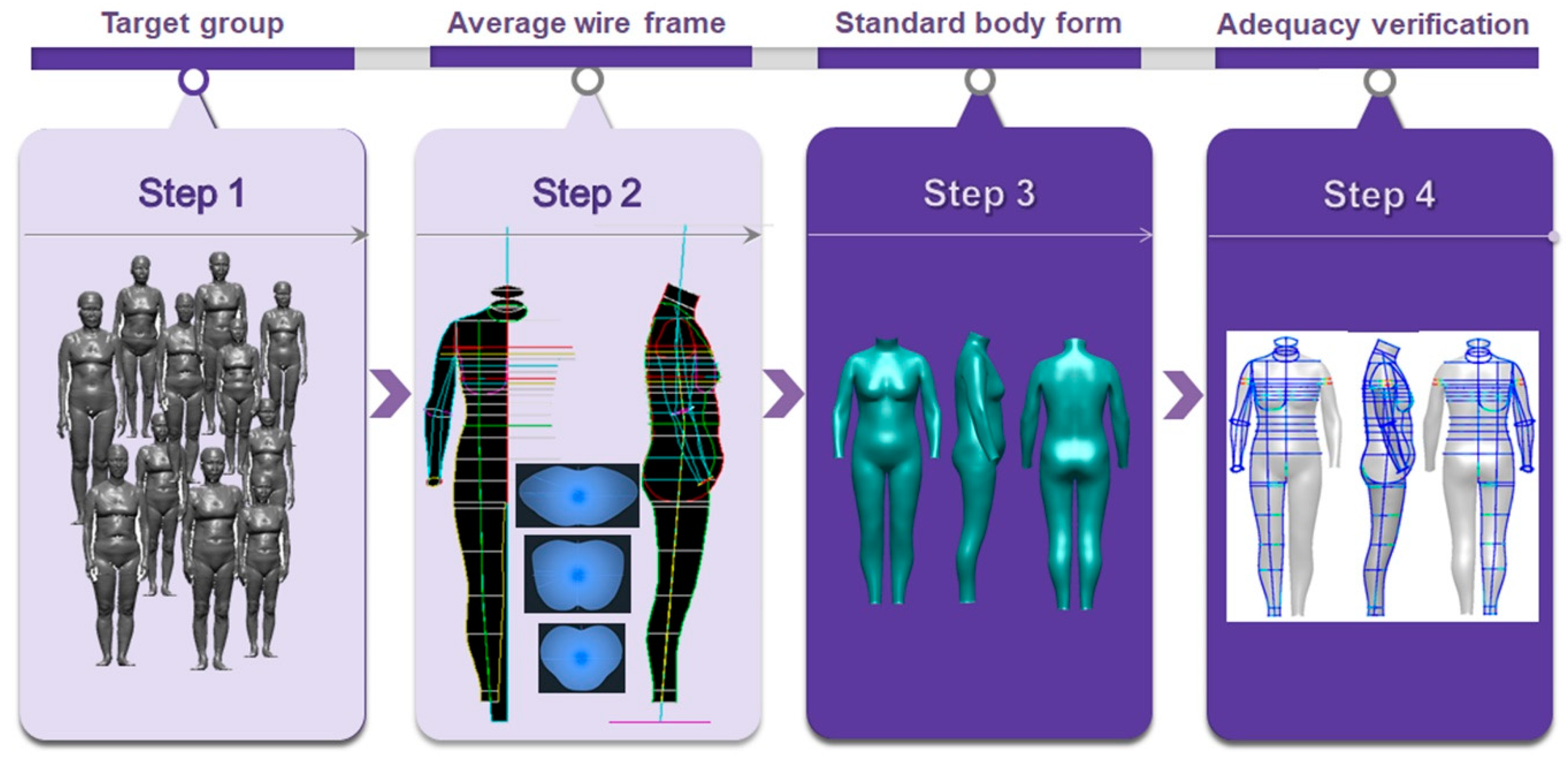
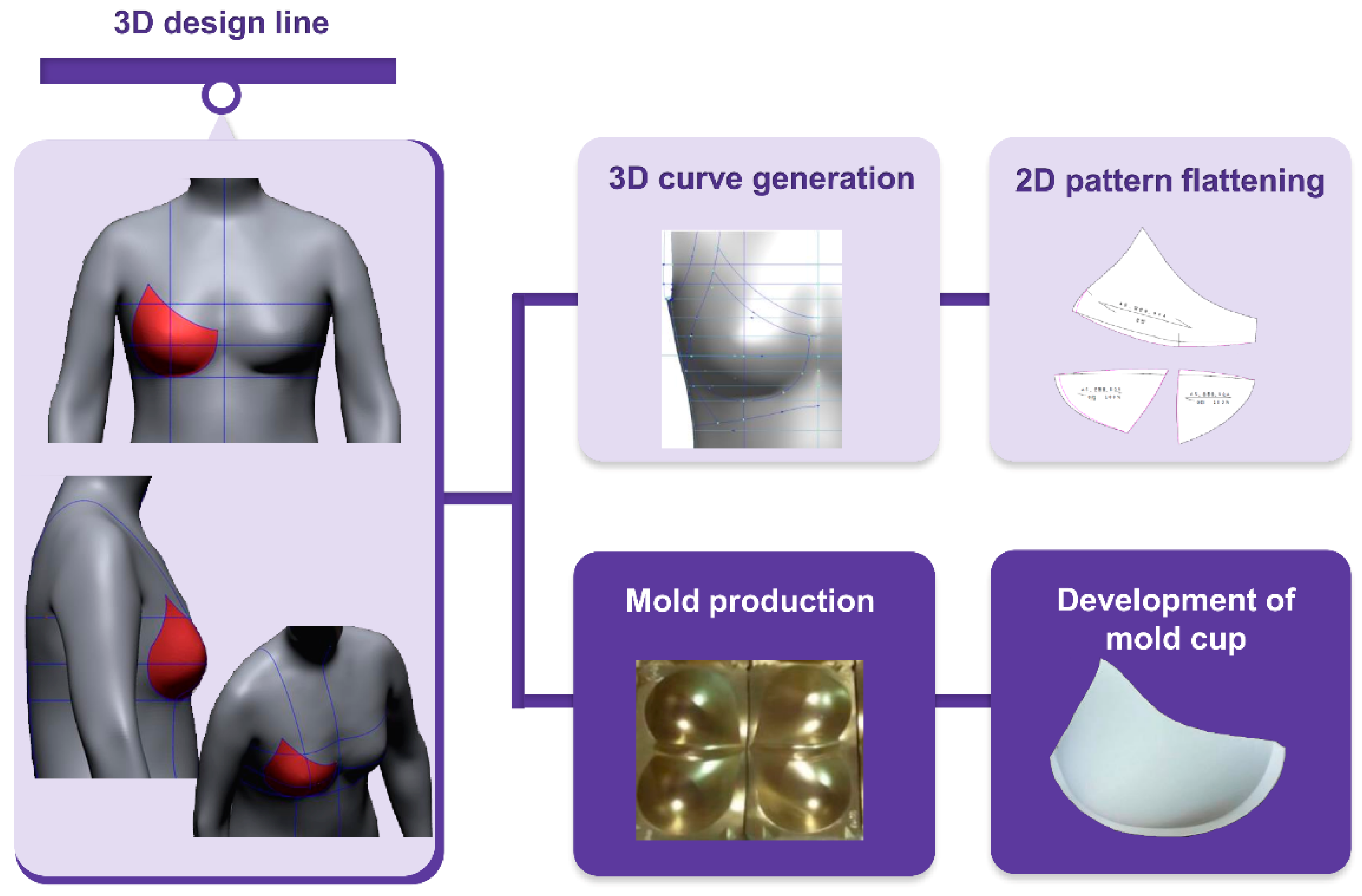
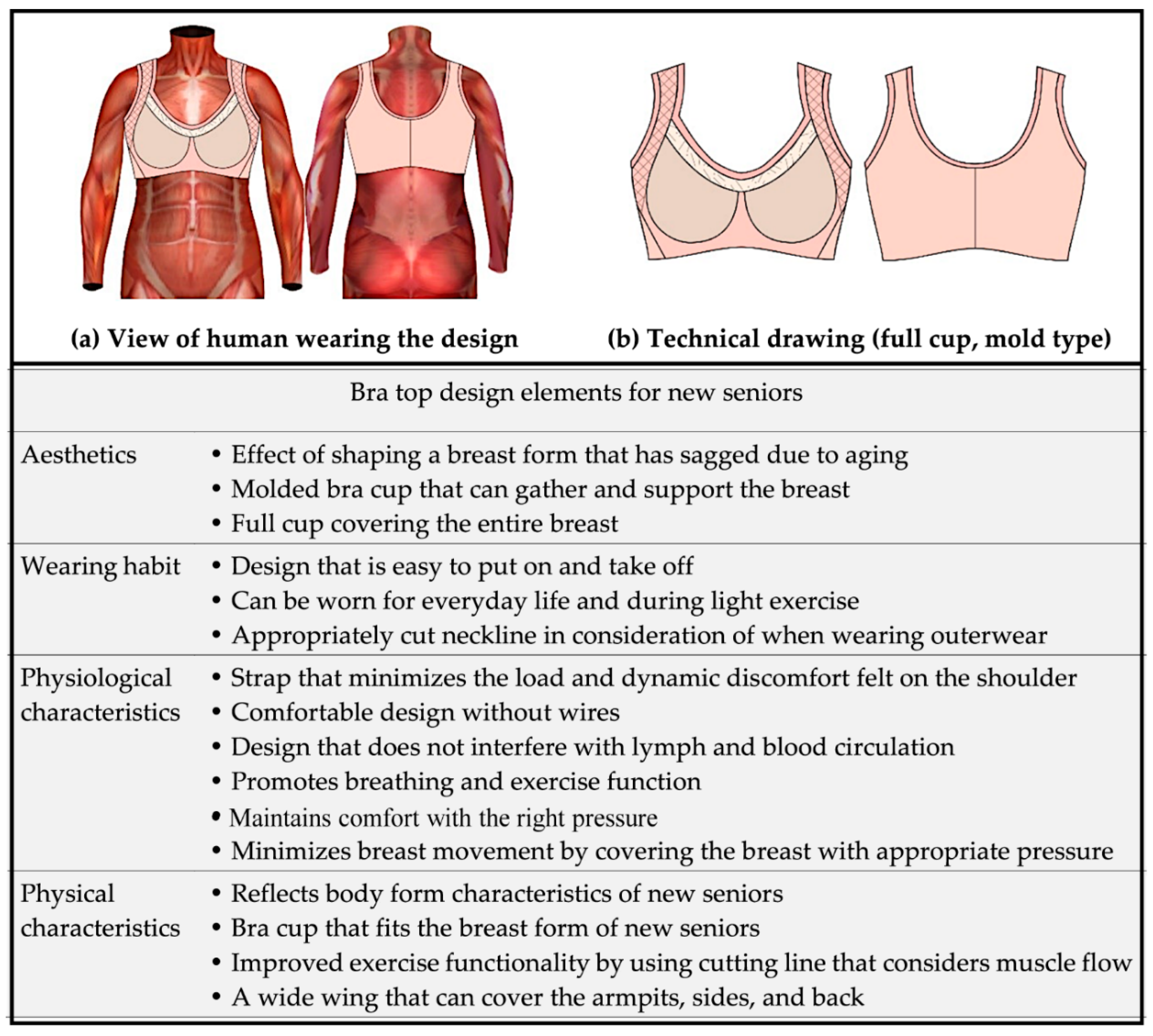
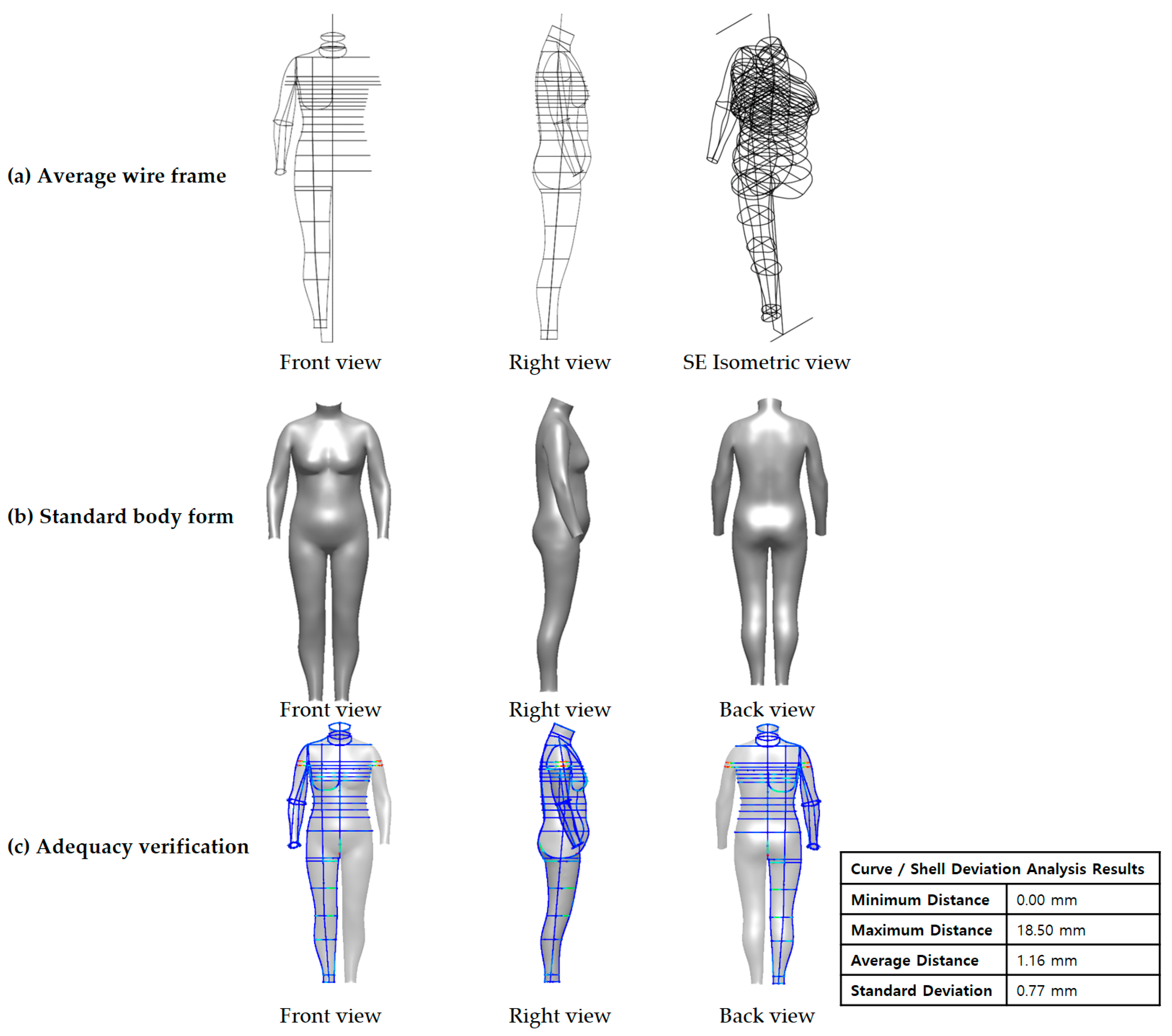
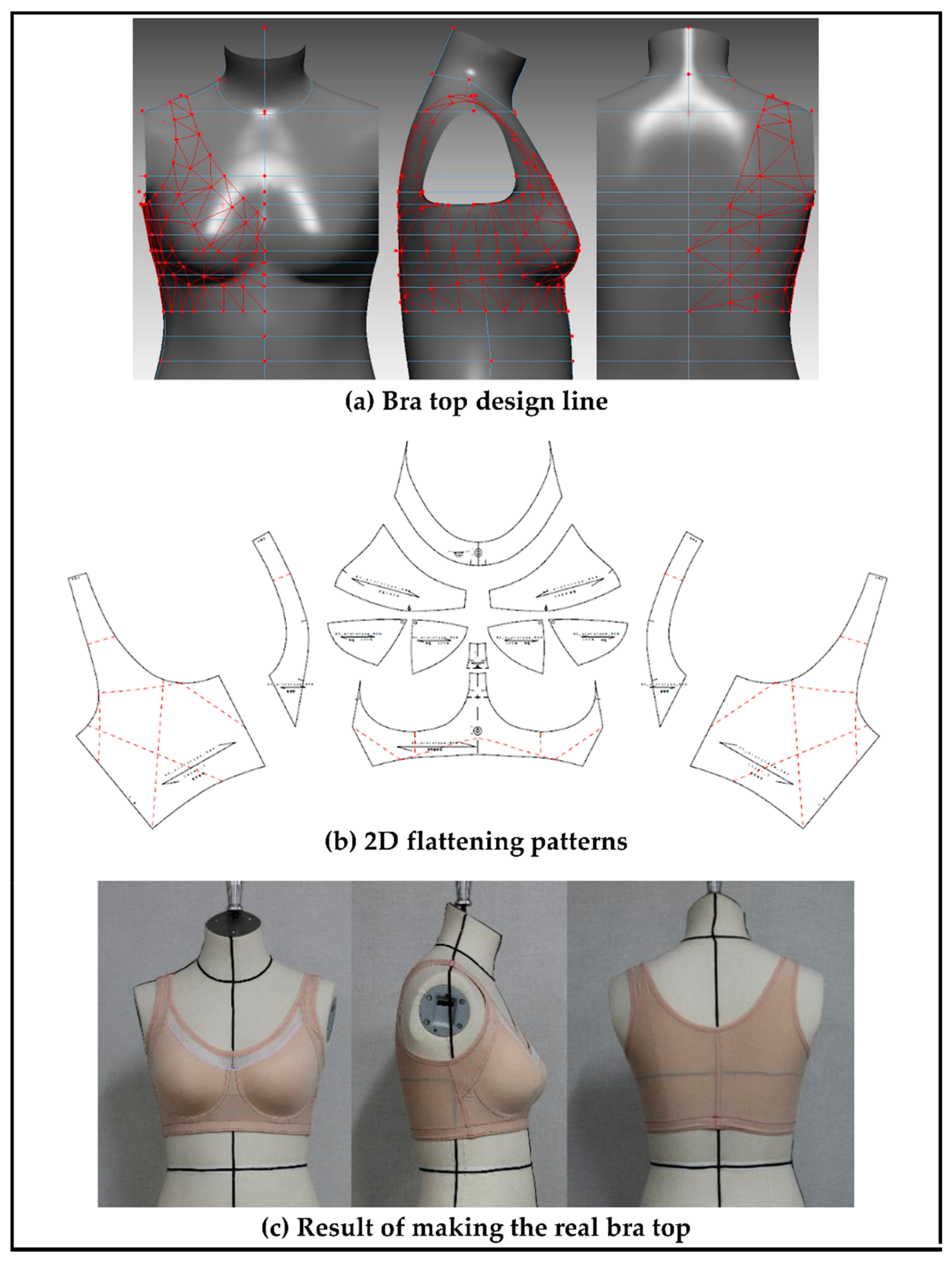
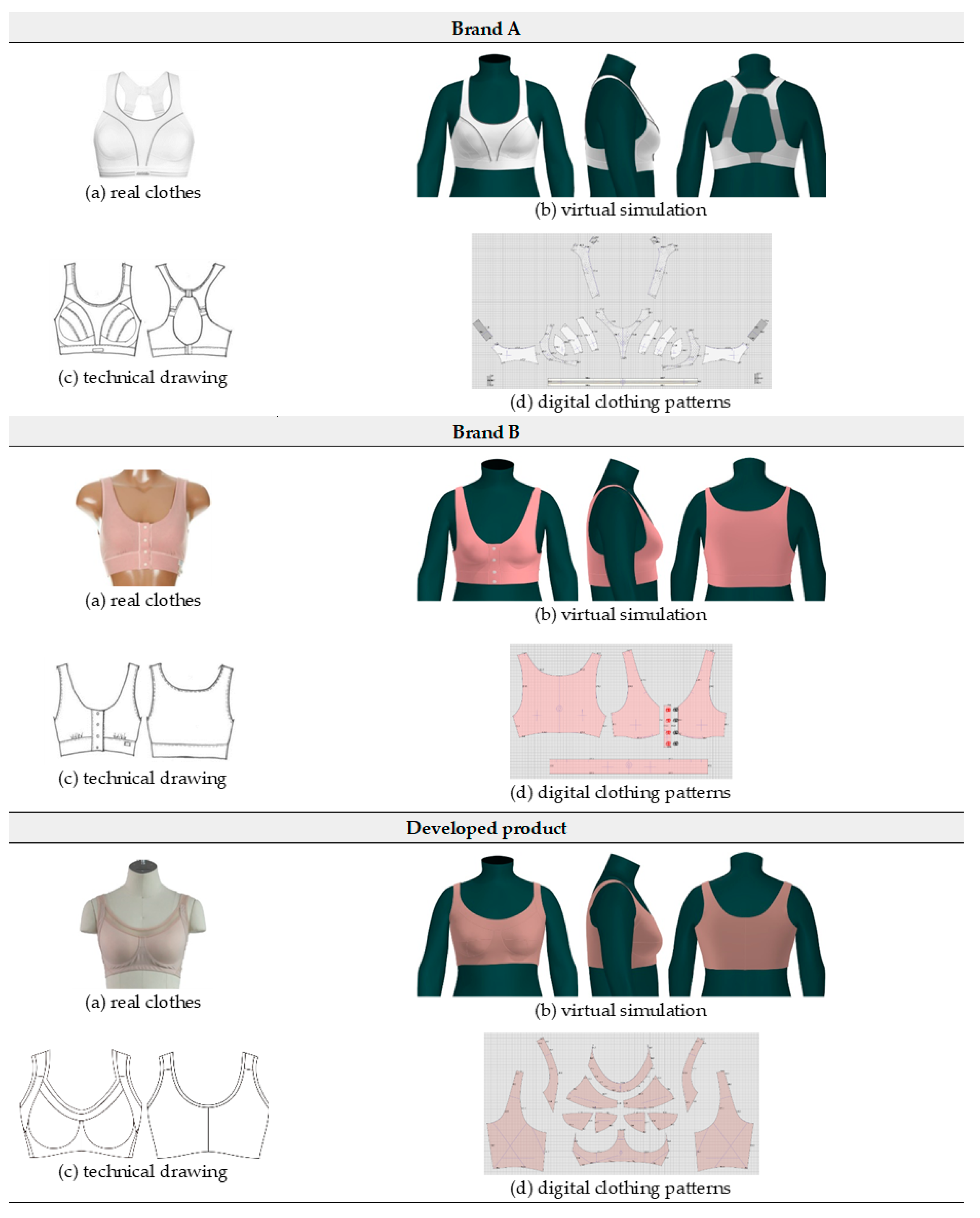
| Category | New Senior Woman (50–59 Year) n = 42 | ||||
|---|---|---|---|---|---|
| M | SD | Min | Max | ||
| height | stature | 1563 | 55.8 | 1483 | 1635 |
| axilla height | 1159 | 48.4 | 1044 | 1252 | |
| bust height | 1111 | 45.7 | 1011 | 1214 | |
| under bust height | 1057 | 46.7 | 966 | 1160 | |
| circumference | chest circumference | 895 | 21.3 | 856 | 949 |
| bust circumference | 898 | 17.6 | 872 | 929 | |
| under bust circumference | 798 | 13.9 | 785 | 821 | |
| length | posterior shoulder length | 390 | 18.8 | 365 | 410 |
| interscye fold, back | 363 | 17.0 | 327 | 401 | |
| anterior–posterior axillary fold length | 167 | 8.8 | 140 | 196 | |
| interscye fold, front | 331 | 14.5 | 287 | 357 | |
| bust point breadth | 176 | 8.9 | 151 | 200 | |
| neck shoulder point to breast point | 260 | 14.6 | 247 | 330 | |
| etc. | body weight (kg) | 56.0 | 4.1 | 48.7 | 67.7 |
| body mass index (BMI) | 23.0 | 1.7 | 20.5 | 25.3 | |
| shoulder slope (R) (°) | 23.0 | 3.2 | 21.0 | 26.0 | |
| shoulder slope (L) (°) | 20.4 | 2.4 | 18.0 | 25.0 | |
| body axis angle | neck angle (°) | 85.2 | 4.3 | 77.7 | 92.7 |
| upper body axis angle (°) | 96.5 | 4.1 | 89.1 | 102.4 | |
| lower body axis angle (°) | 94.7 | 0.8 | 93.1 | 96.2 | |
| 2D Flat Pattern | Molded Bra Cup | Relative Error (%) | |
|---|---|---|---|
| A (upper side) | 141.30 | 152.00 | 7.57 |
| B (lower side) | 231.20 | 236.00 | 2.08 |
| C (cup center width) | 173.10 | 170.00 | −1.79 |
| Brand A | Brand B | Developed Product | |
|---|---|---|---|
| Product picture | 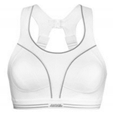 | 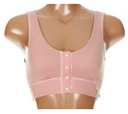 | 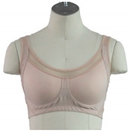 |
| technical drawing |  |  |  |
| Evaluation Questions | Brand A | Brand B | Developed Product | ||||
|---|---|---|---|---|---|---|---|
| M | SD | M | SD | M | SD | ||
| breast area | 1. Does the upper side cup cover the breast? | 3.57 | 0.21 | 3.30 | 0.76 | 4.60 | 0.46 |
| 2. Does the outside of the cup follow the breast? | 2.73 | 0.25 | 2.97 | 0.39 | 4.73 | 0.22 | |
| 3. Does it cover the chest as a whole? | 2.77 | 0.31 | 2.97 | 0.52 | 4.67 | 0.30 | |
| shoulder area | 4. Is the strap’s press on shoulder area appropriate? | 2.93 | 0.09 | 4.07 | 0.19 | 4.03 | 0.58 |
| 5. Is the strap placed properly? | 1.93 | 0.34 | 4.27 | 0.25 | 4.40 | 0.40 | |
| back area | 6. Is the underarm area on the back covered? | 1.43 | 0.39 | 4.03 | 0.42 | 4.07 | 0.41 |
| 7. Is the pressing degree of the lower side of the side wing appropriate? | 1.50 | 0.38 | 4.33 | 0.41 | 4.27 | 0.27 | |
| 8. Is the back side comfortable overall? | 1.50 | 0.22 | 4.40 | 0.49 | 4.37 | 0.31 | |
| M | 2.30 | 0.27 | 3.79 | 0.43 | 4.39 | 0.37 | |
| Category | Strain Map |
|---|---|
| brand A | 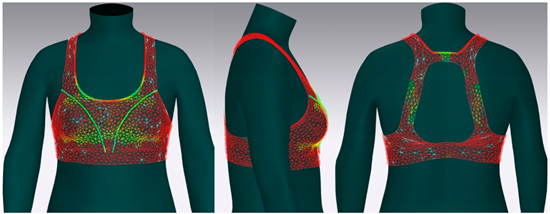 |
| Average pressure in the shoulder area: 21.28 kPa Average strain in the shoulder area: 151.89% | |
| brand B | 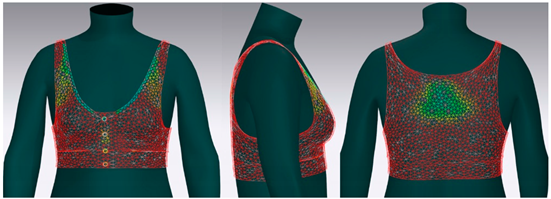 |
| Average pressure in the shoulder area: 71.91 kPa Average strain in the shoulder area: 176.39% | |
| developed product | 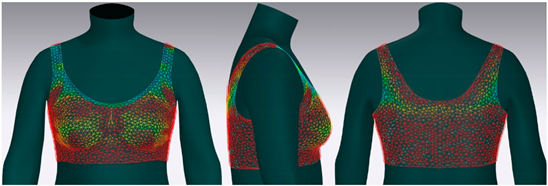 |
| Average pressure in the shoulder area: 11.94 kPa Average strain in the shoulder area: 104.10% |
| Category | Fit Map |
|---|---|
| brand A | 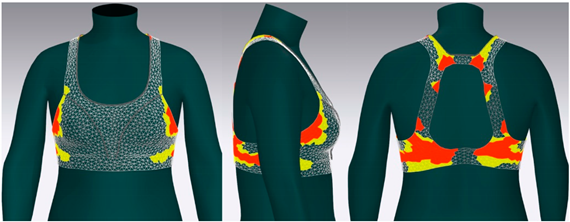 |
| Cannot wear: 17.0% Tight: 30.1% | |
| brand B |  |
| Cannot wear: 39.7% Tight: 56.7% | |
| developed product | 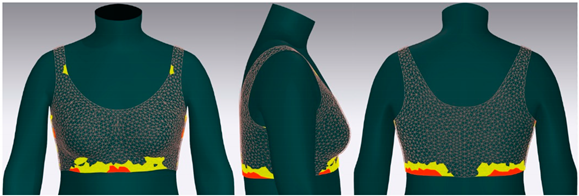 |
| Cannot wear: 2.9% Tight: 10.9% |
Publisher’s Note: MDPI stays neutral with regard to jurisdictional claims in published maps and institutional affiliations. |
© 2021 by the authors. Licensee MDPI, Basel, Switzerland. This article is an open access article distributed under the terms and conditions of the Creative Commons Attribution (CC BY) license (https://creativecommons.org/licenses/by/4.0/).
Share and Cite
Choi, K.; Jun, J.; Ryoo, Y.; Park, S. Digital-Based Healthy Bra Top Design That Promotes the Physical Activity of New Senior Women by Applying an Optimal Pressure. Int. J. Environ. Res. Public Health 2021, 18, 4651. https://doi.org/10.3390/ijerph18094651
Choi K, Jun J, Ryoo Y, Park S. Digital-Based Healthy Bra Top Design That Promotes the Physical Activity of New Senior Women by Applying an Optimal Pressure. International Journal of Environmental Research and Public Health. 2021; 18(9):4651. https://doi.org/10.3390/ijerph18094651
Chicago/Turabian StyleChoi, Kuengmi, Jungil Jun, Youngshil Ryoo, and Sunmi Park. 2021. "Digital-Based Healthy Bra Top Design That Promotes the Physical Activity of New Senior Women by Applying an Optimal Pressure" International Journal of Environmental Research and Public Health 18, no. 9: 4651. https://doi.org/10.3390/ijerph18094651
APA StyleChoi, K., Jun, J., Ryoo, Y., & Park, S. (2021). Digital-Based Healthy Bra Top Design That Promotes the Physical Activity of New Senior Women by Applying an Optimal Pressure. International Journal of Environmental Research and Public Health, 18(9), 4651. https://doi.org/10.3390/ijerph18094651





